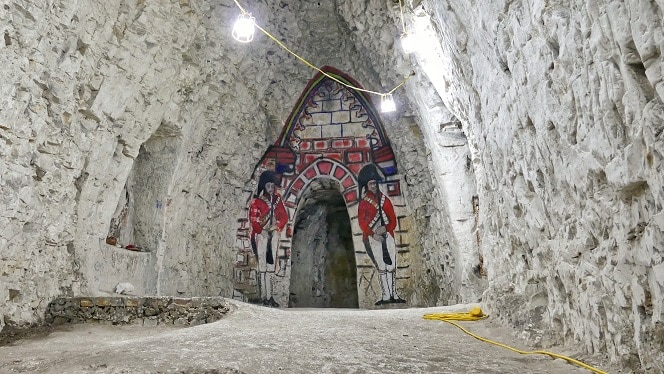
Historic Margate Caves and the new community building in Northdown Road will be open to the public from August 22.
The opening will mark a fresh chapter in the journey by The Margate Caves Community Education Trust which took on the task of bringing the new community building and caves work to reality, following a six year campaign.
Excavation took place in February 2018 and, on the last day of the dig, an Iron Age skeleton was discovered. Since then work has taken place with research into past owners and looking into the origins of the cave murals. Graphic Alliance has worked on plans for the Interpretation on the site and High Peak Geotechnical have been in the Caves carrying out stabilisation works.
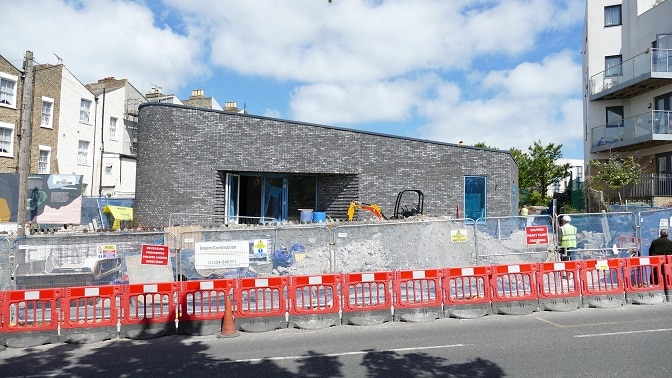
The new community building has taken shape and will include a large community room with kitchens that can be used either as a whole or split into two.
There is also to be an interpretation room, with disabled access. Caves general manager Kayleigh McMahon said: “The interpretation room will have a museum with tales about the history of the caves and 1 Northdown Road – Bryan House, Northumberland Lodge and Trinity vicarage – information about the public campaign to save the caves and what there is below our feet.
“For people who can’t access the caves we are going to have tablets so there is a digital tour with images of the site and paintings.
“With the cafe, community rooms, admissions – all the funding will be funnelled back into the site.
“We expect to have a team of seven or eight people working here but also hope to recruit volunteers and provide a skills for life experience.”
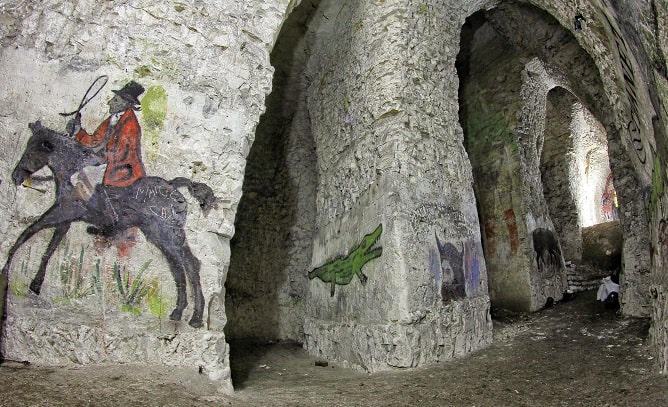
Work in the caves has recently been focusing on clearing and stabilising a chalk fall that had been left for some time, excavating for the creation of a second exit, levelling floors, installing balustrading and conservation work on the paintings to make them stand out but keeping them as “authentic as possible.”
Graffiti at the site dating back as far as 1808, such as some from a member of the Dutch Royal Navy dated late 19th/early 20th century will be retained, the ice wells and fresh water – at high tide – can be seen and even the old entrance created by Forster is evident.
Following the opening of the Caves and community building a new fundraising drive will begin so work on the outside space can take place.
A wildlife area may be created and landscaping will retain and make a feature of tile fragments from Northdown House that were uncovered during the build.
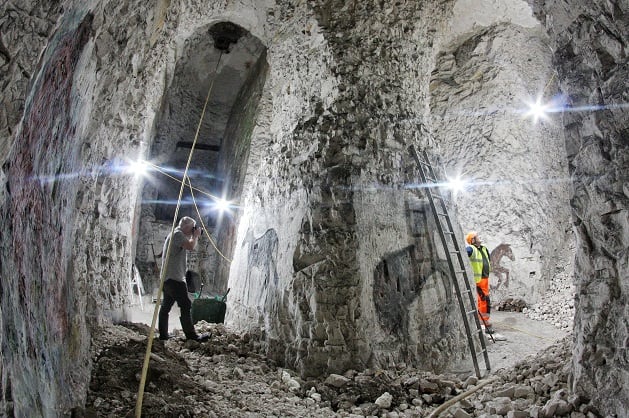
Kayleigh, who previously worked at the Cutty Sark in Greenwich and for the National Trust and English Heritage, said: “It is very exciting.”
Opening hours
Every day, 10am to 5pm, including Sundays and Bank Holiday Monday. Daily opening continues until Sunday, October 27, when it switches to Winter opening hours, 11am to 4pm Fridays, Saturdays and Sundays.
Ticket prices
Adults £ 4.50
Children £2
Concessions £4
Family ticket £10
Where it all began
The site is thought to have originally been excavated as a chalk mine in the late 17th/early 18th century. From 1791-1799, Margaret Bryan had a school house on the site. It was known as Bryan House. In the late 18th century, wealthy Francis Forster bought the site and built Northumberland House. Local stories say that in the last years of the century, his gardener fell down a hole, rediscovering the Caves. Forster commissioned a local artist to paint some images on the walls, such as George III, various animals and a hunting scene. He also dug pits, had ice wells and a fresh water well to show off his wealth and used the Caves as a grotto and wine store. When Forster died in 1835, the Caves were sealed up once again.
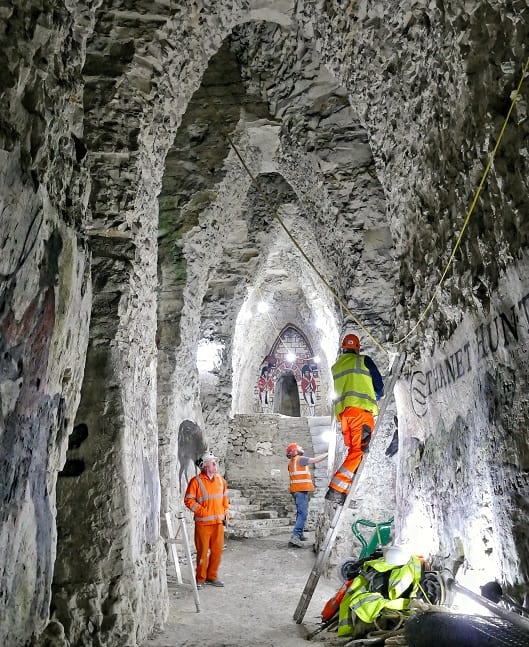
In 1863, an enterprising local man opened them briefly and marketed them to the recent tourists as “Vortigern’s Cavern”. By the latter years of the 19th century, Northumberland House had become the vicarage for Holy Trinity Church. The vicar opened the Caves briefly in 1910, but they were closed at the onset of the First World War. In 1914 a sloping passage was cut from the cellars of the Vicarage so that the residents could use them as an air raid shelter.
After the war the Caves were once again reopened to the public, before being closed again in 1938, with the area scheduled under a scheme called ‘The Zion Place Re-development Plan’.
Once again the Caves provided refuge during World War Two and in June 1941 both Northumberland House and a large portion of Trinity Church were destroyed by enemy action. The site of the vicarage and church was levelled and left derelict for several years.
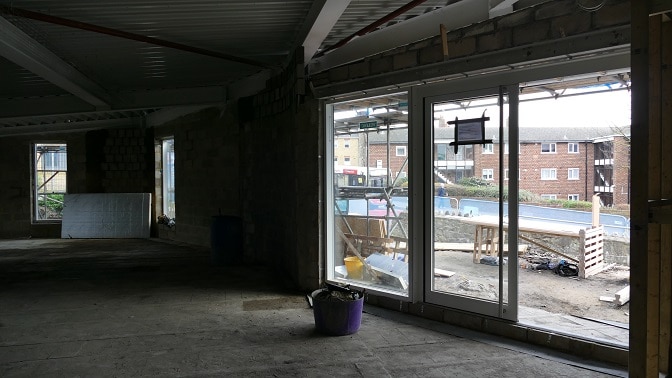
In 1958, James Geary Gardner, the proprietor of Chislehurst Caves, became interested in the site and sought to locate an entrance into the Caves. A concrete paving slab in the old vicarage gardens was lifted, exposing Forster’s old entrance steps. The entrance was cleared of rubble and debris and a set of steps was constructed. Two wooden huts were erected over the entrance for ticket sales.
The Caves once again opened to the public and remained so under several owners until the site was compulsory purchased by Thanet District Council as part of the scheme to widen Northdown Road.
In 2004, due to poor maintenance of the visitor infrastructure, the Caves were closed after a prohibition notice was issued by the Health & Safety Executive.
The public campaign and formation of the trust followed. The building, designed by award-winning architects Kaner Olette, received planning permission in 2015 and Thanet District Council granted the Margate Caves Community Education Trust a long lease for the historic Northdown Road site in 2017.
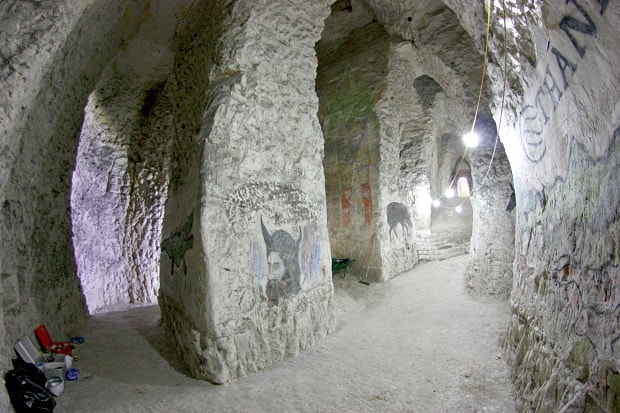
The lease meant the Trust could access a £1m grant gained from the Heritage Lottery alongside the £420,000 granted by the Big Lottery Fund in 2016.
Keep up to date at margatecaves.co.uk

